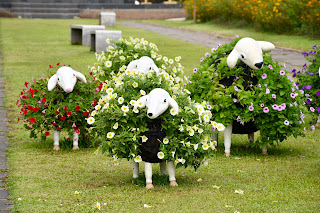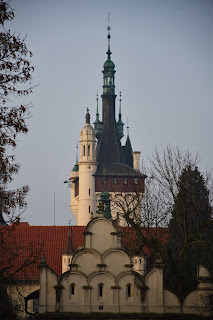A Hike in Chiang Mai
Today, Reese, Linda, and I made a trip to Wat Phra That Doi Suthep, an iconic golden temple that stands atop a mountain just west of Chiang Mai. We started our journey later than I had hoped, as finding a breakfast place in the morning proved quite a challenge. We racked up a further delay while waiting for our Grab cab, with all the taxi drivers either still recovering from a late night or already ferrying huge quantities of tourists. At around ten o’clock, we finally reached the beginning of the so-called Monk’s Trail.
The Monk’s Trail does not go all the way to Wat Phra That
Doi Suthep: it ascends to Wat Pha Lat, after which a steep climb above a
waterfall by the temple leads hikers to the main road. Another trail begins
just west of this junction, called the Doi Suthep Hiking Trail. One could be
forgiven for missing this second part: the trail begins with an inauspicious
climb above another waterfall, after which it appears to taper off several
times before coming into its own as a menacingly steep scramble amid tree roots
and rocks. It does not help that as a rule, people walk the more pleasant trail
to Wat Pha Lat before the sun’s heat kicks in and only begin their unpleasantly
sweaty ascent when it does.
Wat Pha Lat originally served as a rest stop for visitors to
Wat Phra That Doi Suthep, but after the road was constructed in the 1930s, it
became a meditation retreat. The temple is interesting for its slightly
derelict aesthetic and abundant visual details. One thing that attracted my
attention were the stone peacocks, which adorn the roofs, columns, and tympani
of several buildings.
As time passed, we began to meet more and more people on
their way down from Wat Phra That Doi Suthep. Many were Chiang Mai University
students: it is a freshman tradition to climb up the mountain early in the
morning after the principal night of Yi Peng. However, many more groups of
students were just getting started. When we reached the road above Wat Pha Lat,
we ran into a whole crowd of purple-clad youngsters taking the long route to
the temple. At the temple, this crowd became a horde. The sea of students in
their purple shirts flowed in
and out of its doors and along its steps, often forming an impassable barrier
for other visitors.
There were
some upsides, however, to this unfavourable circumstance. Since we still look
young enough to pass for students, we received several free drinks from some of
the many stalls set up under the temple specifically for this event. Nor did
anyone bother to check our tickets, but this did not please me all that much as
I had already wasted my money on acquiring them. The high number of visitors
was also why so many of Chiang Mai’s classical red tuk-tuks were coming up and
down the hill. I am still not sure how it happened, but Reese somehow
sweet-talked our way out of having to join the formidable queue by speaking
directly to a cab driver parked just before the pick-up area. Thanks to this
fortunate feat, we managed to make it back to the city by two o’clock.
While Reese
and Linda stayed at a café by Chiang Mai University, I continued by Grab all
the way to Wat Lok Moli, which I had visited the day before but under
unfavourable lighting conditions for photography. Although it is unclear when
this temple was built, it was first mentioned in writing in 1367. Its stupa must
be among the largest old stupas in Chiang Mai, while its main hall is unique
for its naturalistic wooden walls. After Wat Lok Moli, I also revisited Wat
Chiang Man. Built in 1297 by King Mangrai, this is the oldest temple in the
walled city of Chiang Mai. The oldest structure within this temple is the
Elephant Chedi, a golden roofed stupa with statues of stone elephants ringing
its base. Adding another primacy to the temple’s book of records, one of the
statues at this temple is likely the oldest statue of the Lanna Kingdom.
Following dinner, we walked through the city back to our
hotel, enjoying the lights and colours of the lanterns hung around the temples.
The next day, I squeezed in a visit to The Royal Park Rajapruek before joining
Reese and Linda for a lavish lunch at Haidilao and leaving for the airport. I
found the park pleasant, even if parts of it lean heavily into the pointless
grandeur of open space: allowing trees to provide more shade is almost never a
bad idea. Still, there are some things the park does very well. Its pavilion is
beautiful, and although I found the orchid garden somewhat underwhelming, I
appreciated finding a proper walk-through butterfly exhibit.






























Comments
Post a Comment